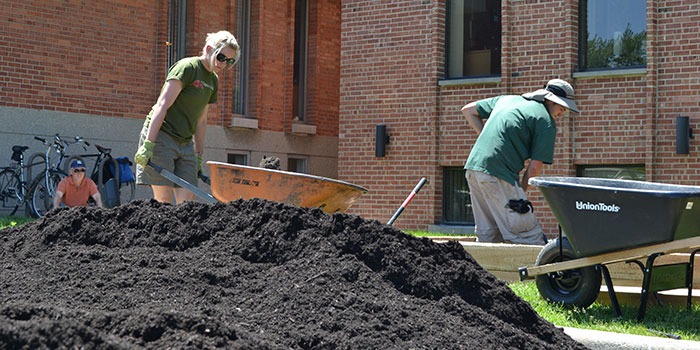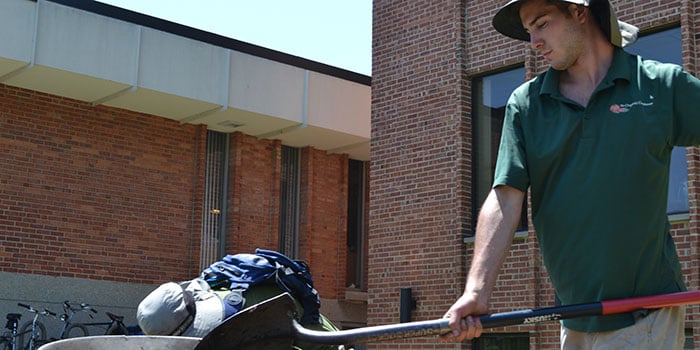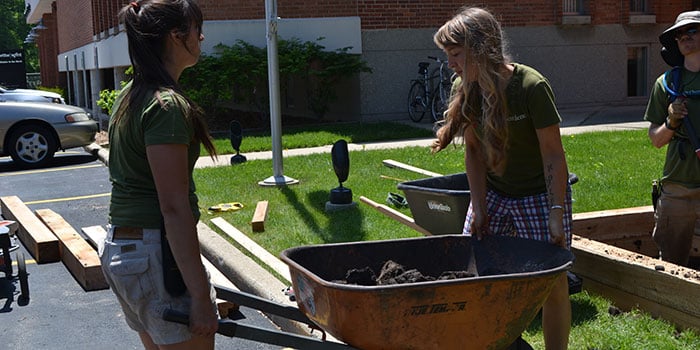The Dirt on Dirt
Growing a sustainable organic vegetable garden is simple but not always easy. You could just throw some seeds into any available dirt and cross your fingers, but the average backyard soil–particularly Midwestern clay–is not the best environment for a productive garden, as it doesn’t have the right nutrient and textural properties for plants to grow strong and healthy.
The soil in which you grow your vegetables is the single most important element of an organic garden. In short: the better the soil, the better the garden. The best soil provides a foundation and nutrients for the plants, and a loose, loamy structure allows water and air to reach plant roots. Feed your soil with organic materials, and it will get even better and healthier year after year.
Soil FAQs
What makes soil organic?
Organic soil is simply soil which has been protected from chemical treatments and mixed with additional organic material for a number of years.
Can I buy organic soil?
Some commercially available packaged soil mixes are organic, but it’s important to research the manufacturer; a good resource is the Organic Materials Review Institute’s list of manufacturers and products. You can also mix your own organic soil by starting with organic materials such as compost, manure, and rock dust.
Why should I test my soil?
First and foremost, it’s good to know if your soil is contaminated with lead or other dangerous chemicals that you do not want leaching into your vegetables. But it’s also good to know if the soil is too acidic or alkaline, too dense or loose, or contains insufficient nutrients to efficiently grow vegetables. Soil tests are available at big-box stores, or you can send samples to your local extension office, which will return results with suggestions for amending and improving the soil. If the existing soil is too difficult to work with, you can opt to bypass amending it altogether and build raised beds for your vegetable garden, and then fill them with organic soil mix.
How can I improve my soil?
Soil improvements begin with knowing what your soil is missing, but a good start is mixing in well-rotted compost to loosen and add nutrients to the soil. Keep adding compost (you can’t really add too much) and the microbes will feed the soil.
Should I till my soil?
While it’s important to maintain loose, soft soil to let roots spread and grow, tilling and churning soil destroys the microorganism colonies that keep soil active and healthy. Instead of tilling and turning soil over, consider double-digging: remove the top several inches of soil with a spade and set it aside on a tarp. Then loosen the next layer of soil with the spade several more inches but do not turn it over. Finally, gently mix the top layer of soil with compost and return the mixture to the garden. This aerates the soil and provides a good base for planting but minimizes disruption to microbacteria.
How can I make my own organic soil to fill a raised bed?
First, be sure you’re starting with organic materials – again, the OMRI list of manufacturers is a great place to start. The simplest mix is a 2:1 ratio of topsoil to compost. It’s a good idea to use a variety of composts – manure, mushroom, homemade compost, chicken pellets, etc. – to ensure adequate nutrients.





